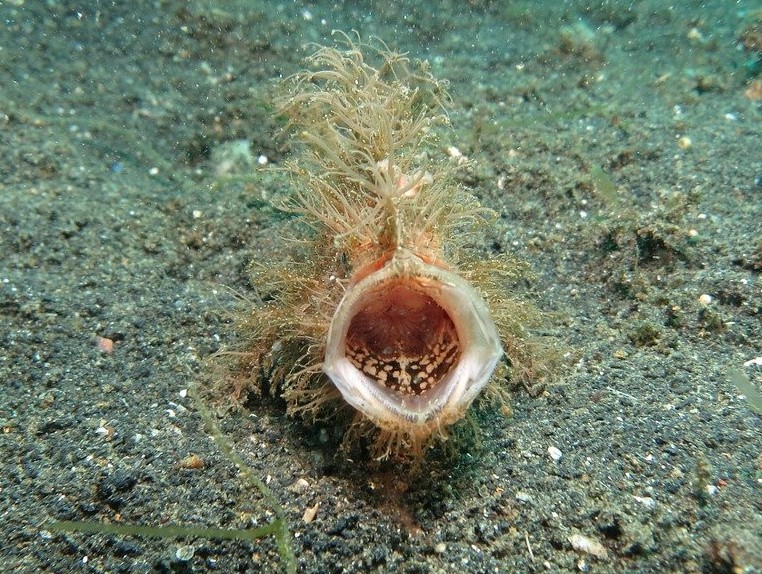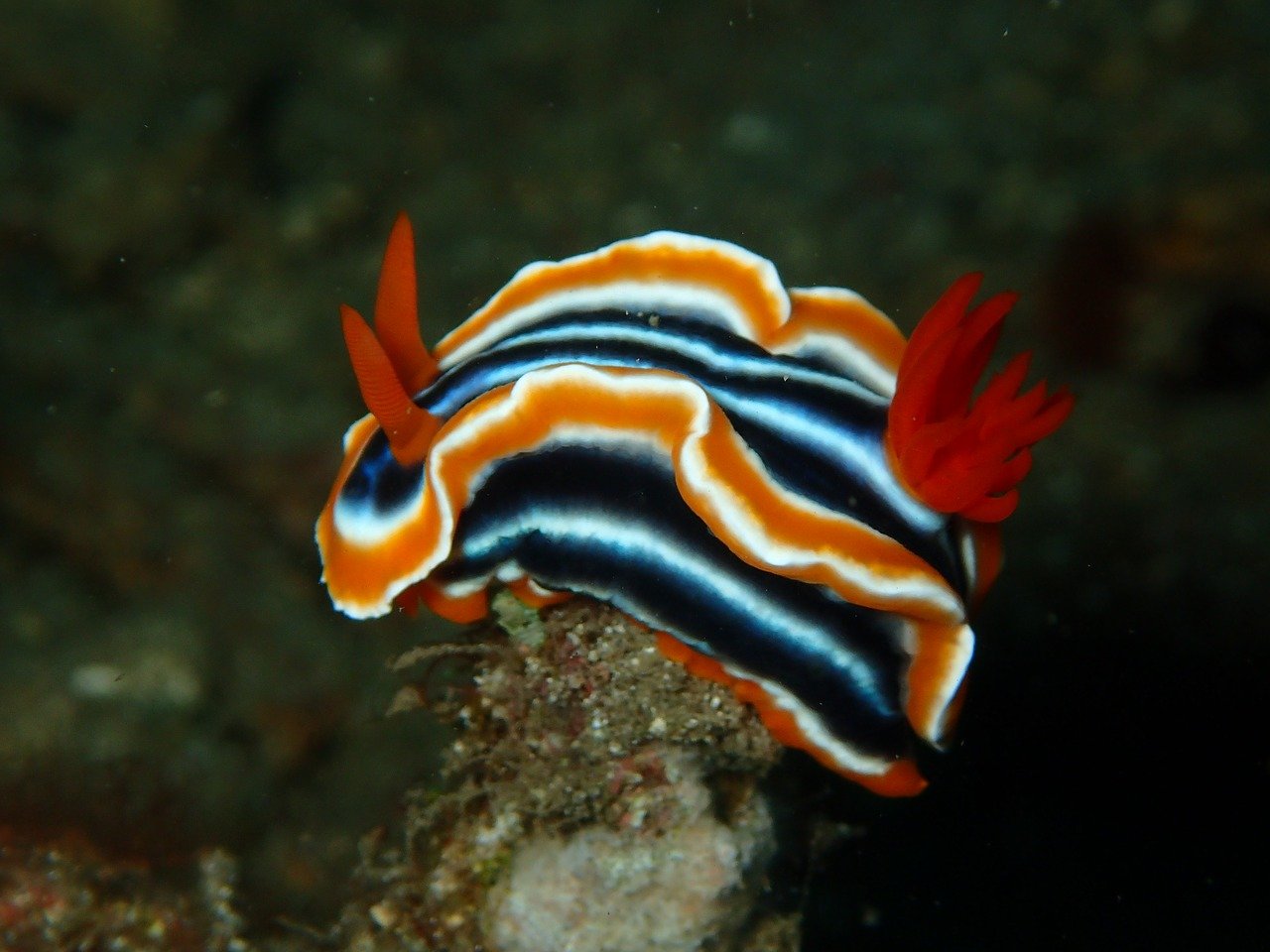Last Updated on November 19, 2022 by Matt
Coral reef ecosystems have some of the highest biodiversity on the planet. They are truly mesmerizing, with thousands of species of coral, sponges, mollusks, echinoderms, sharks, turtles, and fish. With all these different species available, it is no surprise that fish have developed many different strategies of finding food. There are numerous different ways animals have adapted to the ecological niche they have carved out for themselves.
In this article, we will describe some of the different feeding behavior of reef fish. There are many different types of reef fishes, and many have very different ways of feeding and gaining nutrients. Lots of species are suitable for aquaria, but the strategies of some fish make them incredibly difficult to keep in the home aquarium.
There are four main types of feeding strategies; the detritivores, the herbivores, the omnivores, and the carnivores. However this often gets confused when talking about coral reef fish communities; as there is so much going on more categories need to be made!
Carnivores are classed as any animal which eats other animals. However animals can include large organisms like fish, tiny zooplankton, and everything in between. The same can be said of herbivores. Therefore these groupings are broken down so they aren’t so large. Fish are usually classified as follows:
Carnivores: Carnivores (feed on mobile benthic animals and fish); piscivores (feed on living fish); mobile-invertebrate feeders (feed on crabs, mollusks, and other mobile benthic animals); sessile-invertebrate feeders (feed on sessile benthic inverts such as corals and sponges); planktivores (feed primarily on micro- and macro-zooplankton).
Herbivores: Roving herbivores (fish which feed on turf algae, macroalgae, and detritus); territorial herbivores (feed on turf algae within a set territory).
Omnivores: Omnivorous fish are still classified as fishes that feed on a variety of organisms, including both animal and plant material.
Hopefully this article is a fun read and gives you good information about the different feeding behaviors of reef fish.
IN THIS ARTICLE
Herbivores
Herbivorous reef fish feed on the algae which grows on and throughout the reef ecosystem. Algae is found on reefs in the form of turf algae or macroalgae, along with microscopic planktonic algae.
Turf algae is a commonly used term but is quite poorly defined. It doesn’t indicate any particular species of algae, just loosely or densely aggregated mats of algae, usually less than 6 inches in height. Diatoms, cyanobacteria, chlorophytes, phaeophytes (brown algae), and rhodophytes (coralline algae) can all form algal turfs.
Macroalgae is used to indicate any type of seaweed, which grow readily on coral reef ecosystems, especially on reef flats and high up on the reef.
Planktonic algae is incredibly small, and is mainly utilized as a food source by fry and larval fish, along with filter feeding invertebrates. Plankton is simply too small for adult fish to eat.
As said in the introduction, there are two main types of herbivorous reef fish; roving herbivores and territorial herbivores.
Some of the best examples of roving herbivores are the parrotfish of the family Scaridae, and fish of the Acanthuridae family which contains the surgeonfish, tangs, and unicornfish.

Parrotfish showing strong teeth used for scraping algae off rock
These fish are known as roving herbivores, as they don’t hold or defend a territory themselves for feeding. Instead they roam the reef looking for algae to feed on. The range that some individuals roam is quite limited, whilst others cover larger distances. Roving herbivorous fish are very important to the health of coral reefs as they prevent algal overgrowth, which greatly inhibits coral growth.
The best example of territorial herbivorous fish are the damselfishes. They are also known as the farmers of the reef! Individual damselfish maintain a garden, in which it maintains and promotes the growth of algal turf. In this algal turf grows all kinds of algae, such as diatoms, filamentous algae, brown algae, and bacteria as well. A damselfish’s garden is more productive than surrounding areas.
Different damselfish species have different algae that they prefer to eat, as they lack enzymes to break down certain groups of algae. In some areas, damselfish strictly maintain their garden to grow red algae, while others only weed out only invasive species and grow a mixed algal garden. All damselfish will actively protect their gardens from roving herbivores, and fights are often seen. They will also move invertebrates like sea urchins away before they can eat their prized algal crop.
Carnivores
Carnivorous fish have many different prey items and many different hunting strategies have developed in the multitude of species which hunt on the reef.
Some of the different prey items that carnivorous fish have adapted to prey on include corals, sponges, tunicates, cnidarians, mollusks, crustaceans, echinoderms, zooplankton, and fish.
With all of the different prey species and the different life histories they have, many hunting strategies have developed. Some of the different strategies include sand sifting, substrate displacement and excavation, crevice and hole hunting, ambushing, luring, stalking, pursuing, parasite picking, cooperative hunting, and zooplanktivores.
Most fish can be placed into multiple hunting categories.
Frogfish display aggressive mimicry. They have a specialized lure which mimics a worm or other organism, which entices prey close. Once close, the frogfish will stalk its prey before striking. This falls into luring, ambushing, and stalking. Frogfish have huge protruding mouths and can swallow prey as big as themselves.

Frogfish showing its large mouth, making it able to swallow prey as large as itself
Moray eels have very long bodies, and can fit into crevices. When hunting they swim across the bottom of the reef and roam into holes and hiding places searching for hiding fish, crustaceans, and other invertebrates to eat. This is a prime example of crevice and hole hunting. Moray eels are also a great example of cooperative hunting, as groupers are known to recruit Giant Morays for hunting expeditions by shaking their heads. As the morays flush fish out of their hiding places the groupers catch them.
Species such as surgeonfish and cardinalfish are specialized planktivores, and feed on small zooplanktonic animals like larval crustaceans.
Large fish like barracudas are very streamlined and have razor sharp teeth, perfect for chasing and catching their fish prey. Barracuda are voracious predators, and often form and hunt in packs.
There are a number of ways in which fish feed on corals. Some fish feed on coral mucus, some eat polyps without damaging the calcium carbonate skeleton, some eat the polyp with a small amount of skeleton, while others take large chunks of the skeleton. Some feed on dead coral substrate. Butterflyfish are perhaps the best example of specialized corallivores, as they account for over 50% of all corallivorous fish. They have fine teeth in mouths which can protrude like forceps, neatly pecking off their prey from the rock. Some butterflyfish also feed on the exposed body parts and appendages of polychaetes and other invertebrates.
Parasite pickers are a fascinating group of carnivorous fish. The most famous are the cleaning wrasses, which pick and eat parasites and dead skin from much larger fish. Huge animals like manta rays and turtles are often seen lining up and forming an orderly queue at popular cleaning stations! Many groupers, which could easily eat the cleaner wrasse, open their mouths to allow the wrasse to clean their gums.

A pufferfish being cleaned of parasites by a Hawaiian cleaner wrasse. Credit: By Brocken Inaglory CC BY-SA 3.0, WikiCommons
The false cleanerfish is a combtooth blenny which mimics the coloration and behavior of cleaner wrasse, but instead of helping by eating parasites, instead taking a chunk of flesh! This is another example of aggressive mimicry.
Shadow hunting is often seen on the reef. This is where a carnivorous fish follows a larger carnivorous, herbivorous, planktivorous, or omnivorous fish. The idea is that the carnivorous fish follows in the shadow of the herbivorous or planktivorous, or not actively hunting larger carnivore. The carnivore uses the larger fish as a screen to hide itself, allowing it to get much closer to prey items before emerging and striking. Common examples are grouper and snappers hunting close to manta rays.
Omnivores
There aren’t many purely detritivorous fish found on coral reefs. Omnivores however are quite common. A coral reef is a real battleground, with almost every animal having an array of predators, and facing a constant fight to find food.
As such, many fish will happily eat most things they can find, whether it be algae, detritus, fish, crustaceans, or mollusks.
For instance most parrotfish are primarily herbivorous, feeding on epilithic algae, however they are also known to eat both sessile and benthic invertebrates such as sponges and crabs, zooplankton, bacteria, and detritus.
Butterfly fish are most famous for being obligate corallivores, however some also feed on sea anemones, while others are much more generalized feeders, feeding on most organisms.
Conclusion
Hopefully this article has given you some interesting information about the feeding behaviors of reef fish.
Many reef fish have fascinating feeding behaviors, and the sheer scope and range of diets and the behavior surrounding these diets is huge, and each feeding behavior could easily have an entire article or two dedicated to it.
Let us know in the comments if you want to know more about specific feeding behaviors of reef fish!







